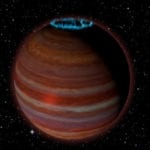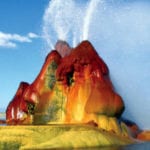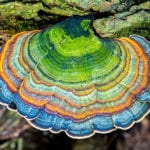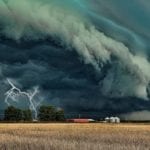 Technology
Technology  Technology
Technology  Our World
Our World 10 Ways Icelandic Culture Makes Other Countries Look Boring
 Misconceptions
Misconceptions 10 Common Misconceptions About the Victorian Era
 Mysteries
Mysteries 10 Strange Unexplained Mysteries of 2025
 Miscellaneous
Miscellaneous 10 of History’s Most Bell-Ringing Finishing Moves
 History
History 10 Great Escapes That Ended Right Back in Captivity
 Weird Stuff
Weird Stuff 10 Fascinating Things You Might Not Know About Spiders
 Food
Food 10 Everyday Foods You Didn’t Know Were Invented by the U.S. Military
 History
History 10 Odd Things Colonial Americans Kept at Home
 Weird Stuff
Weird Stuff 10 Superstitious Beliefs That Once Consumed Entire Cultures
 Technology
Technology 10 Scientific Breakthroughs of 2025 That’ll Change Everything
 Our World
Our World 10 Ways Icelandic Culture Makes Other Countries Look Boring
 Misconceptions
Misconceptions 10 Common Misconceptions About the Victorian Era
Who's Behind Listverse?

Jamie Frater
Head Editor
Jamie founded Listverse due to an insatiable desire to share fascinating, obscure, and bizarre facts. He has been a guest speaker on numerous national radio and television stations and is a five time published author.
More About Us Mysteries
Mysteries 10 Strange Unexplained Mysteries of 2025
 Miscellaneous
Miscellaneous 10 of History’s Most Bell-Ringing Finishing Moves
 History
History 10 Great Escapes That Ended Right Back in Captivity
 Weird Stuff
Weird Stuff 10 Fascinating Things You Might Not Know About Spiders
 Food
Food 10 Everyday Foods You Didn’t Know Were Invented by the U.S. Military
 History
History 10 Odd Things Colonial Americans Kept at Home
 Weird Stuff
Weird Stuff 10 Superstitious Beliefs That Once Consumed Entire Cultures
20 Natural Wonders That Didn’t Make The Cut
We all grew up learning about the 7 Natural Wonders of the World, which, up until recently, consisted of The Grand Canyon, The Great Barrier Reef, Harbour of Rio de Janeiro, Mount Everest, Aurora Borealis, Paricutin Volcano and Victoria Falls. In 2001, however, a Swiss corporation called New7Wonders, in conjunction with UNESCO, started an initiative to choose new wonders, based on public voting. On 07/07/07, a brand new list of 7 man-made Wonders was released, after more than 100,000,000 votes from the public were cast. Later in the same year, the 7 New Wonders of Nature campaign was launched, and the Vote count took place on 11/11/11. The announcement was made, and now our new 7 Natural Wonders of the world consists of – The Amazon River, Halong bay, Iquazu Falls, Jeju Island, Komodo Island, Puerto Princesa Underground River and Table Mountain. In this list, I was less interested in looking at the 7 winning entries, as I am sure they will be spoken about for years to come, and more interested in looking at the entries that did not make it, as they might soon be forgotten. Of the 28 finalists for which the public voted, this list is all about 20 that did not make it onto the list. All the entries are listed in alphabetical order, as I cannot judge which is better.
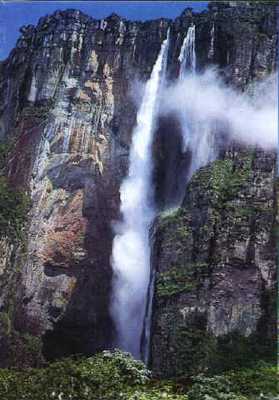
At a height of 979m, Angel Falls is the world’s highest waterfall. Found in the Canaima National Park in Venezuela, which has been a UNESCO World heritage site since 1994. The waterfall drops over the edge of Mt Auyantepui and plummets into the Korep River almost a kilometer below. This spectacular waterfall was named after Jimmie Angel, who was the first U.S. pilot to fly over the falls. The falls makes for one of Venezuela’s most popular tourist attractions, even though reaching it proves to be rather difficult, as visitors will need to fly to the Canaima camp before trekking through the jungle and taking boats up the river. Trips to the falls can only be made during the rainy season when there is enough water to take the boats up river and get a glimpse of the magical waterfall.
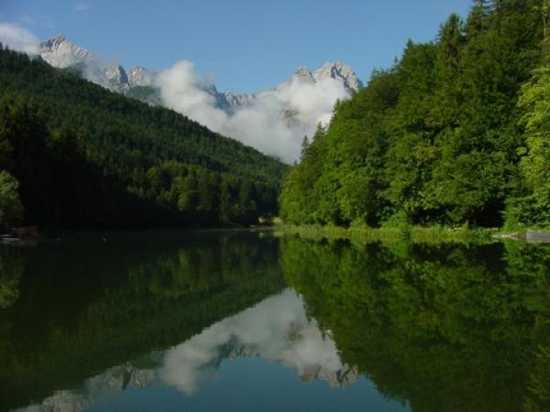
The Black Forest is found in South-Western Germany. It was named the Black Forest by Romans, because of the dense tree growth, which blocks out the sun almost completely. The forest consists mainly of firs and pines, which were needed for wood, and resulted in mass logging in 1999, obliterating acres of the forest and reducing its size to a fraction of what it was. It is also the only home of Lumbricus badensis, which is a species of giant earth worm. The Black Forest is also the home of many small towns and villages, from which black forest ham and black forest cake apparently originated.
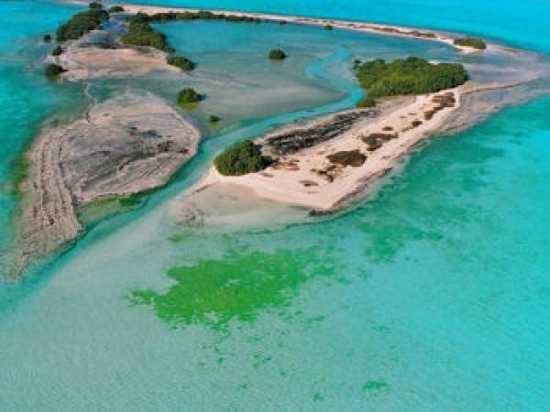
Bu Tinah is found in the waters of Abu Dhabi and is protected as a private game reserve. It is a tiny cluster of islands, amongst extensive coral reefs and seaweed beds. It is recognized as a UNESCO marine biosphere reserve, and is off limits to visitors. The Islands brag of at least 16 species of coral and holds high significance for climate change research, as coral generally thrives in water with a temperature between 23°C and 28°C, but in this case, is thriving in water that can reach up to 35°C. The islands are also home to a wide range of wildlife, including the rare hawksbill turtles and dugongs.
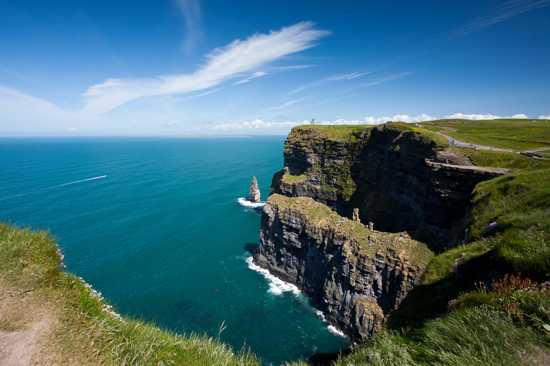
The Cliffs of Moher are located in Ireland’s County Clare. They range from a height of 120 meters to 214 meters, and make a vertical plummet into the Atlantic Ocean. Over a million tourists visit the cliffs for the exceptional view that they provide. The cliffs are home to an array of animals, including 30,000 birds. Besides the wildlife and tourists, you might have seen the cliffs before, as they have been featured in a number of films, including Leap Year, Princess Bride, Harry Potter and the Half Blood Prince and several episodes of Father Ted.
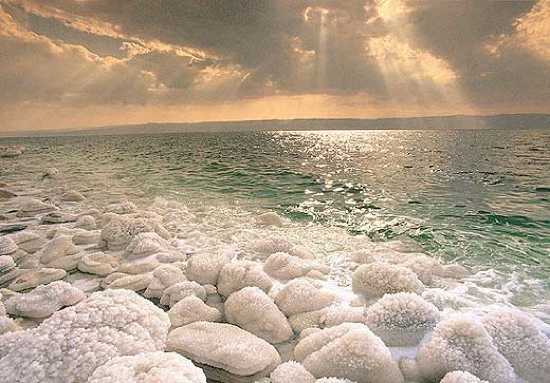
The Dead Sea is a stretch of water about 67km long and 18km wide. It is a hyper saline lake and is 8.6 times saltier than the oceans, with a 33.7% salt saturation. The Dead Sea and its surrounding coastline is also the lowest elevation of the earth’s surface, at 423 meters below sea level, and is also the deepest hyper saline lake on earth, with a depth of 377m. The Dead Sea received its name as no marine life or animals can flourish or survive in the extreme conditions. The mud from the bottom of the Dead Sea is full of minerals and nutrients, which is used commonly in spas and resorts, as well as proving an effective treatment for eczema and psoriasis. The ultimate reason why tourists flock to the Dead Sea, however, is that the high density of the water (2.24kg/L) allows a person to float on the surface.
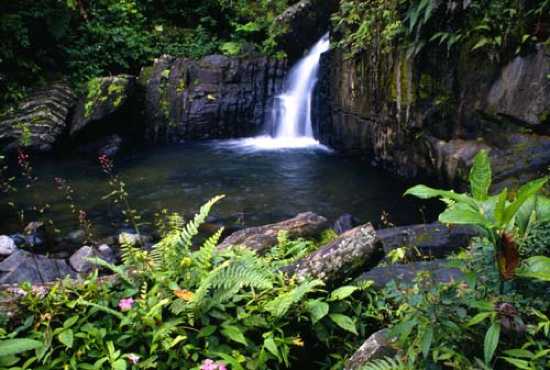
El Yunque National Forest is found on the North Eastern side of Puerto Rico, and is the only tropical rainforest in the United States National Forest System. The rainforest is situated on the slopes of the Sierra de Luquillo Mountains and covers a 113.3km2 area. The forest has diverse flora and fauna, including up to 23 species of plants which are endemic to the area. Due to the forest’s location just below the tropic of cancer, it does not have specified seasons and generally has year-round rains, which can amount to over 6m or 240 inches of rainfall per year.
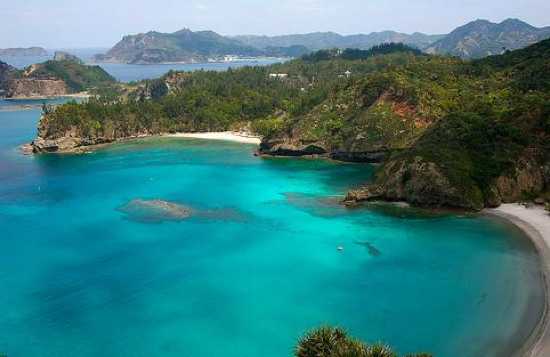
The Galapagos Islands are a series of small volcanic islands in the Pacific Ocean. They are about 972km west of Ecuador, and form an Ecuadorian national park and biological marine reserve. There are 18 main islands in this relatively new geological formation, and they are renowned for their diverse wildlife and connections to Charles Darwin’s theory of evolution, as he had also visited the Islands and based a large portion of his research on discoveries made there. In 1957, 97.5% of the Galapagos was declared a national park and, in 1986, 70,000km2 of ocean surrounding the Islands were declared a marine reserve. By 2001, both the national park and the marine reserve had been declared a world heritage site by UNESCO.
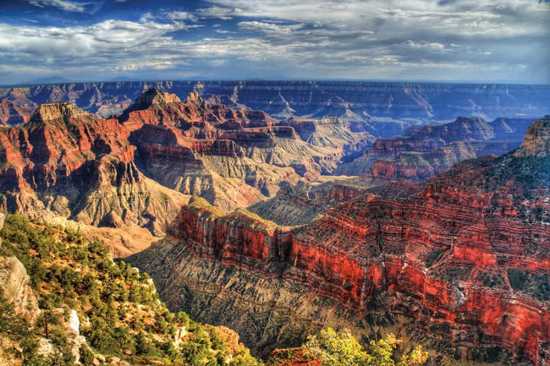
The Grand Canyon is located in Arizona, USA. It is believed that the Colorado River first cut its path through the would-be canyon, 17 million years ago, and has since been eroding it down to its current state. The Canyon is 446km long, up to 29km wide and about 1.8km deep. Through the years of erosion, almost 2 billion years of the Earth’s history has been exposed in the rock layers. The first evidence of human activity in the canyon is up to 3000 years old. The Pueblo Native Americans have inhabited the Grand Canyon for centuries, and some still reside there. The Canyons are also one of the world’s top tourist attractions, and draw about 5 million people to it every year. The Grand Canyon was a prominent feature on the previous list of 7 natural wonders, but has failed to make the cut this time around.
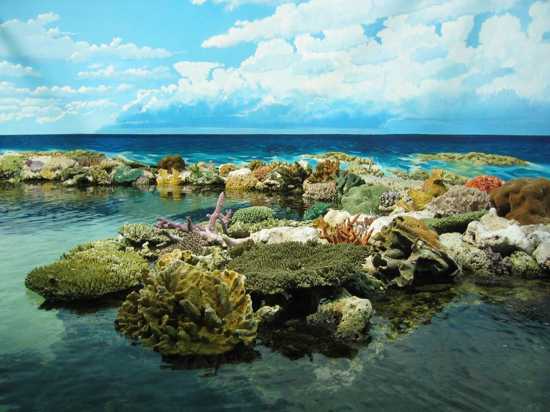
The Great Barrier Reef is another wonder, from the previous 7 natural wonders list, that did not make it onto the new list. It is the largest reef system in the world and covers 344,400km2, with almost 3000 reefs and 900 islands. The reef is a protected world heritage site and one of the most thriving and diverse ecological sites in the world. The Great Barrier Reef is also the largest structure built by living organisms in the world, and can be seen from space. This magnificent reef is also home to over 30 species of whale, dolphin and porpoise, 6 species of sea turtle and a whopping 1500 species of fish.
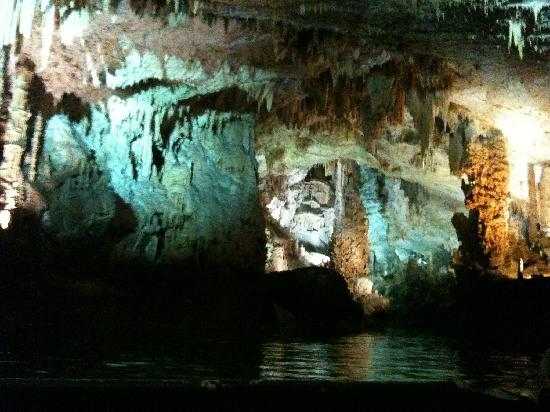
The Jeita Grotto is two large interconnected cave systems that span for over 9km. The astounding caves are located just 18km from the Lebanese capital, Beirut. The two systems form the lower cave, which is only accessible by boat through an underground river system, which also happens to provide more than a million people with fresh drinking water, and the upper cave which forms large chambers and contain the world’s largest stalactite. A multitude of evidence has been found to suggest the caves being used as shelter by humans for thousands of years, long before their rediscovery, in 1836. Evidence found in the caves suggest human presence, in the form of pot shards, spear heads and bone shards, from the Late Palaeolithic/early stone age, the Neolithic/late stone age and the Chalcolithic/copper age/transitional bronze age.
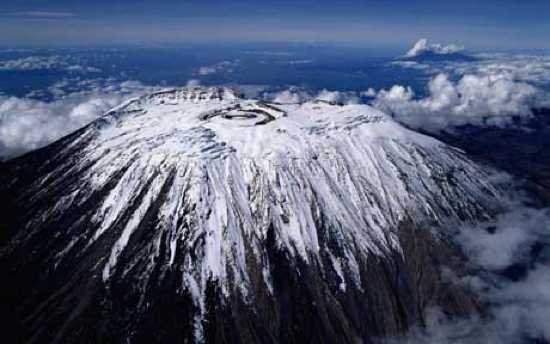
Mt Kilimanjaro is the tallest mountain in Africa, and is located in the Kilimanjaro National park, in Tanzania. It is, in fact, a volcano with three distinct cones called Kibo, Mawenzi and Shira – Kibo being the largest of the three and also having the mountains highest summit. Even though the huge volcano is located close to the equator, has lush tropical and sub-tropical forests, savannahs and grasslands surrounding it, and receives up to 2000mm of rainfall per year, it is still capped with snow year round, due to its enormous height of 5895m. After running tests on snow samples from the summit, it was determined that the base snow is over 11,000 years old. A major decrease in the amount of snow that caps Kilimanjaro has been witnessed since 1912, it now carries an 80% lighter load than then, and is expected to be snow free by 2030. The two smaller volcanic cones are extinct, but Kibo, the largest, is only dormant and could erupt again in the future.
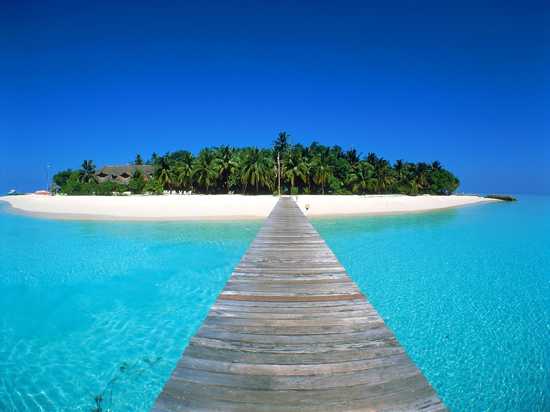
The Maldives, or the Republic of the Maldives, is a series of 26 natural Atolls (coral islands that surround a lagoon completely or partially) situated in the Indian Ocean, about 400km south-west of India. Each atoll consists of smaller islands and coral reefs, and the Maldives’ 26 atolls form about 1130 smaller islands, of which only about 200 are inhabited. The Maldives are renowned for their diverse variety of colorful corals, and are home to over 300 species of tropical fish. Seven new species of fish have been discovered fairly recently in the Maldives. Sadly, in 1998 the increase in water temperature brought on by El Niño, killed two thirds of the entire coral population, but by 2004 methods using electrified, coral larva attracting cones that speed up coral growth was discovered and the reefs are being rehabilitated.
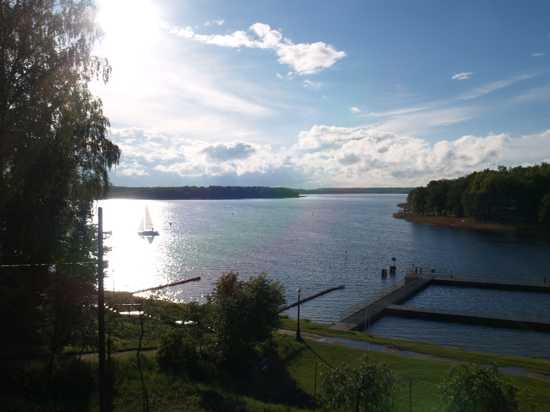
The Masurian Lake District is found to the north-east of Poland. It has over 2000 lakes, spread across 52,000km2. Most of the lakes are interconnected by rivers forming a large, extensive system of waterways. The entire district was shaped by the Pleistocene Ice Age and is now a very popular tourist destination, which offers fantastic boating opportunities, angling, cycling, hiking and canoeing, perfect for any nature lover. The entire area boasts 11 nature reserves with a wide variety of wild life. The area has a temperate climate with warm summers and cold winters, during which time the lakes freeze over.
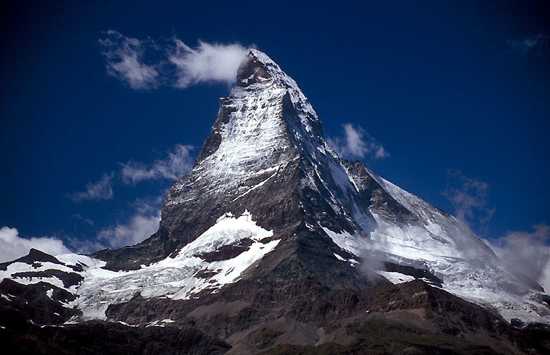
The Matterhorn is a mountain in the Pennine Alps, on the border between Italy and Switzerland. The mountain forms one of the highest peaks in the Alps, and it has four very steep sides, pointing in the directions of a compass, forming a pyramid at the summit. The Gargantuan Mountain towers over Zermatt village on the Swiss side, and over Breuil Cervinia on the Italian side. The Matterhorn has inspired fear in climbers for years, and was one of the last alpine mountains to be conquered. It was first ascended in July 1865, by seven climbers from the Swiss side, however two of the climbers plummeted to their deaths on the descent. Only three days later, the mountain was climbed again, by Jean-Antoine Carrel and Jean Baptiste Bich, who became the first to reach the summit from the Italian side.
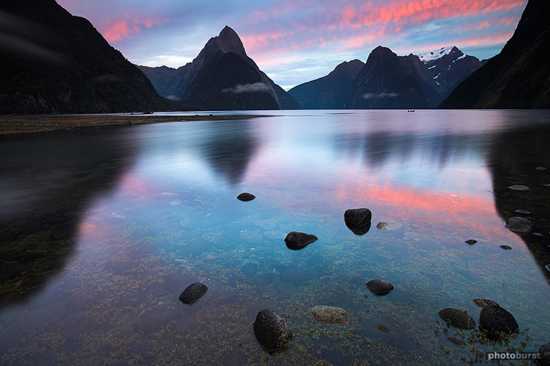
Milford Sound is a fjord/fiord (a long narrow inlet with steep sides) found on the south-west side of New Zealand’s Southern Island. It is also a marine reserve, a world heritage site and one of the most popular tourist destinations in New Zealand. Milford Sound runs for 15km inland from Dale Point and is completely surrounded by high, steep rock faces and cliffs. Many of the cliffs and peaks surrounding the fiord have been named according to their appearance, for instance, The Elephant reaches 1517m in height and resembles an elephants head. Milford Sound is also the wettest inhabited area in New Zealand, causing lush forests to blanket the cliffs. The waters below are teeming with dolphins, penguins and seals with the occasional whale rearing its head, as well. There are two magnificent permanent waterfalls gushing down the cliffs, but when it rains, hundreds of temporary waterfalls form.
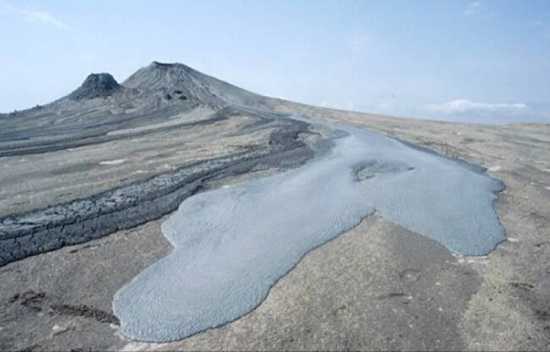
Mud Volcanoes are basically formed when underground mud deposits are forced to the surface, expelling gasses and muddy liquid mixtures. Of the 700 known mud volcanoes around the world, over 400 can be found in Azerbaijan, along the countries Caspian coastline. All the mud volcanoes are fed by a giant underground mud lake. 86% of all the gas released by the pits is methane, which caused quite a stir in 2001, when one of the pits started spewing fire up to 15m into the air. It is estimated that every mud volcano should have at least one large eruption every 20 years, and for the rest of the time they create nutritional mud baths, to which tourists flock.
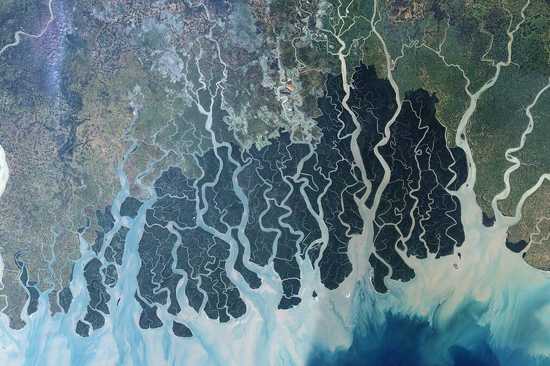
The Sundarbans form the largest saline mangroves in the world, and the name translates to “beautiful jungle” or “beautiful forest.” The mangrove is formed by three convoluted rivers, called Padma, Brahmaputra and Meghna. The Sundarbans cover about 10,000km2, collectively, with fresh water forests found more inland & saline tolerant mangroves closer to the coast. Thanks to the complicated, interconnected waterways, almost all parts of the mangrove is accessible by boat. The mangrove is home to crocodiles, deer, snakes, hundreds of varieties of birds and several endangered species, such as Bengal tigers, Ganges river dolphins, olive ridley turtles, hawksbill sea turtle and even the critically endangered Javan rhinoceros.
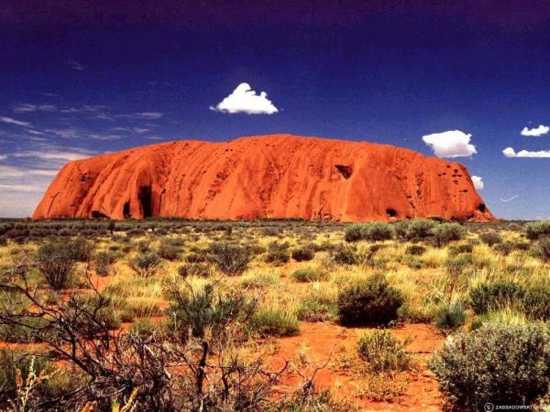
Uluru is the name given to a huge sandstone rock formation, slightly south of central Australia. Uluru is a sacred site for the Aboriginal Australians, whose ancient rock art can be found in a variety of caves found in the sandstone mound. Uluru stands 348 meters above the ground, and has a circumference of 9.4 km, but the larger portion is buried beneath the ground. It is believed that Uluru is a small remnant of large mountain ranges that use to stand in the area. It also boasts several streams, springs and water holes, is a popular tourist attraction and takes about one hour to climb.

Mt. Vesuvius is a well-known volcano in Italy, about 9km away from Naples. It is a large mountain that has only one cone, which is surrounded by the rim of a caldera that collapsed into the much larger original mountain, called Monta Somma. Mt. Vesuvius has erupted about 30 times in the last 2000 years, with the most notable eruption occurring in 79 AD, which is the eruption that famously swallowed Pompeii, a town near Naples, burying it beneath 4-6m of ash and pumice. After the town’s rediscovery and excavation in 1794, it has become a very popular tourist attraction and is considered a world heritage site. Vesuvius’ last eruption was in 1944, but none of the eruptions following 79AD has been quite as destructive. Today, the area around the mountain is considered a national park and millions of tourists flock up the mountain every year to look into the crater.

Yushan, or Jade Mountain, is the highest point of the Yushan mountain range and also the highest mountain in South East Asia. The summit of the mountain stands 3952 meters above sea level and continues about 4000m below sea level, to the ocean floor. During the winter, the mountain is covered in frost, looking much like smooth uncut jade, hence the name. During the summer, lush conifers cover the base of the mountain. Because the area has a high climate range, there are about 140 species of bird, 28 species of mammal, 17 species of reptile, and over 186 kinds of butterflies living on the mountain and the surrounding Yushan national park.

